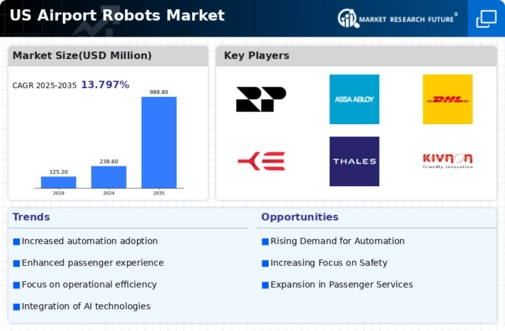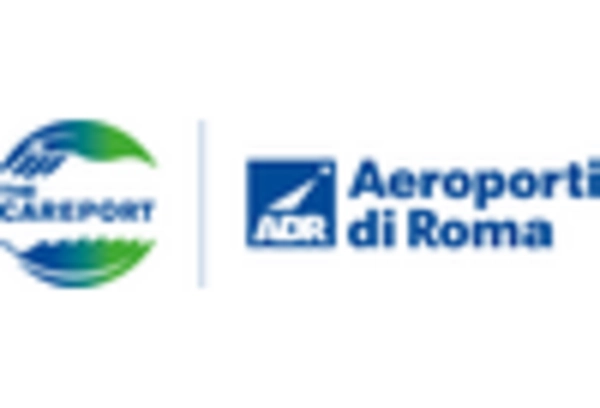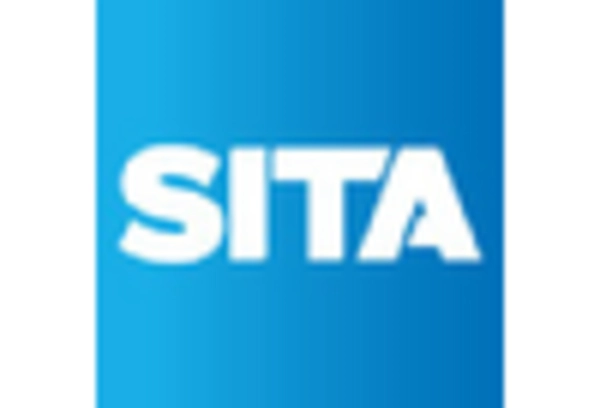Rising Labor Costs
The airport robots market is also being propelled by the rising labor costs associated with airport operations. As wages increase, airports are exploring automation as a means to mitigate these expenses. The deployment of robots for repetitive and labor-intensive tasks can lead to significant cost savings. For example, studies indicate that airports can save approximately $1 million annually by replacing manual processes with robotic solutions. This economic incentive is compelling airports to invest in automation technologies. As labor costs continue to rise, the airport robots market is expected to expand, as more facilities seek to balance operational efficiency with financial sustainability.
Focus on Safety and Hygiene
In the context of the airport robots market, there is an increasing emphasis on safety and hygiene protocols. Airports are adopting robots for cleaning and sanitization tasks to ensure a safe environment for travelers. The use of autonomous cleaning robots can reduce human contact and enhance the effectiveness of cleaning operations. Data suggests that airports utilizing robotic cleaning solutions can achieve a 50% reduction in cleaning time, allowing staff to focus on other critical areas. This heightened focus on hygiene is likely to persist, as travelers prioritize safety in their travel experiences. Consequently, the airport robots market is expected to grow as more airports invest in robotic solutions to meet these evolving safety standards.
Growing Demand for Efficiency
The airport robots market is experiencing a notable surge in demand for operational efficiency. Airports are increasingly seeking solutions that can streamline processes, reduce wait times, and enhance overall passenger experience. The integration of robots for tasks such as baggage handling and security checks appears to be a viable strategy. According to recent data, the implementation of robotic systems can potentially reduce operational costs by up to 30%. This drive for efficiency is not only about cost savings but also about improving service quality, which is crucial in a competitive aviation landscape. As airports strive to accommodate rising passenger numbers, the airport robots market is likely to expand significantly, driven by the need for innovative solutions that enhance productivity and service delivery.
Increased Passenger Expectations
The airport robots market is responding to the heightened expectations of passengers for seamless travel experiences. Modern travelers demand convenience, speed, and personalized services, which robots can provide effectively. The integration of robots for information assistance, baggage handling, and navigation support is becoming increasingly common. Data indicates that 70% of travelers express a preference for automated services that enhance their airport experience. This shift in consumer expectations is likely to drive the growth of the airport robots market, as airports strive to meet and exceed these demands. The focus on improving passenger satisfaction through innovative robotic solutions is expected to shape the future landscape of airport operations.
Technological Advancements in Robotics
The airport robots market is significantly influenced by rapid technological advancements in robotics. Innovations in artificial intelligence, machine learning, and sensor technologies are enabling the development of more sophisticated and capable robots. These advancements allow robots to perform complex tasks, such as navigation and real-time data processing, with greater accuracy. For instance, the introduction of AI-driven robots can enhance passenger interactions and provide personalized services. The market for airport robots is projected to grow at a CAGR of 15% over the next five years, driven by these technological improvements. As airports continue to adopt cutting-edge technologies, the airport robots market is likely to witness substantial growth, reflecting the industry's commitment to modernization.

















Leave a Comment